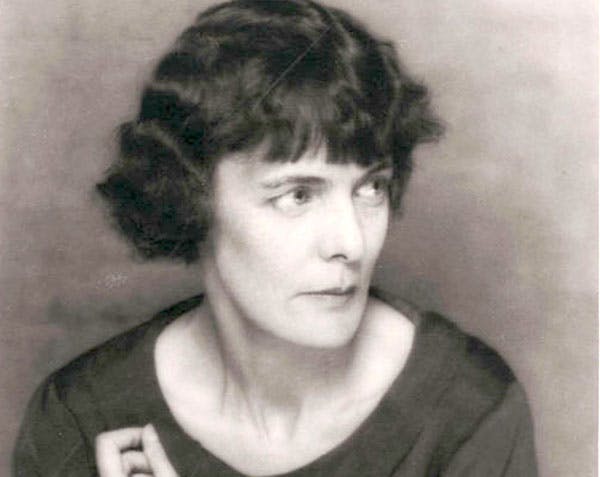An Imagist Poet Rates an Imagist Biography
H.D. created herself in her writing about her analysis of Freud, about mythology, religion, and a range of ancient and modern subjects that has made it difficult for her biographer to pin down her subject.

‘H.D.’
By Lara Vetter
Reaktion Books, 208 pages
H.D. (Hilda Doolittle) first came to public notice as a member of the Imagist group of poets, which also included the likes of Ezra Pound, Richard Aldington, F.S. Flint, D.H. Lawrence, and Amy Lowell. They advocated the abandonment of the rhetorical, ornate poetry of the Victorian/Edwardian age.
Imagism influenced many modern poets, such as William Carlos Williams, who declared, “No ideas but in things.” Thus he could write the famous lines: “so much depends / upon / a red wheel barrow/ glazed with rain / water / beside the white chickens.” The poem is about a field of vision, an attention to the position, color, and shape of the world we inhabit.
H.D.’s famous poem “Oread” (1915) unites the sea and land in a kind of precise yet surreal fashion, reminiscent of what painters like Leonora Carrington pictured on canvases that blend the inside and outside of human experience — houses, their occupants, and nature — in self-contained works of art bounded only by their own imagery.
“Oread” is an invocation of the elements not so different from King Lear’s address to the wind: “Whirl up sea— / whirl your pointed pines, / splash your great pines / on our rocks, / hurl your green over us, / cover us with your pools of fir.”
So who was H.D.? She wrote an autobiography, but mainly as an effort to thwart biography. Lara Vetter observes of her subject: “she loathed biographies of her modernist comrades that had begun to appear in the final decade of her life, even as she devoured them.” That paradox is what Ms. Vetter probes in her acute, compact biography.
H.D. (she did not like a name that seemed both common and predictive of a person who would not do much) was from Bethlehem, Pennsylvania, and had, in Ms. Vetter’s words, a “narrow life … as a child—though not an unhappy one.”
The life that mattered was in the perpetual motion of creation that made biography problematic. She created herself in her writing about her analysis of Freud, about mythology, religion, and a range of ancient and modern subjects that has made it difficult for her biographer to pin down her subject.
To Ms. Vetter’s credit, she does not discount the difficulty: “At times, I have had to rely on H.D.’s own autobiographical accounts, but I have been careful to cite and contextualize them as such, particularly in cases where there is no corroborating evidence.” Most biographers would go no further than admitting that much of a problem, but Ms. Vetter perches her book even more precariously: “As I teetered toward fiction, I feared that accuracy flagged.”
Such admissions ought to weaken the biographer’s authority, but in Ms. Vetter’s case the opposite is true because she is as supple as her subject: “H. D. was well aware in her autobiographical endeavors that she wasn’t just creating the story,” insisting “the story must create me.”
Writing, in short, takes on a life of its own that can seem to the writer in the words chosen that she has no choice because of the very words she has chosen.
The biographer handles this symbiosis of the writer and her words with exquisite delicacy. Of H.D.’s biography of Elizabeth Siddall, an artist’s model and poet during the Pre-Raphaelite period, Ms. Vetter notes: “Of her subject, H.D. remarks pointedly: ‘Her humanity was at war with the fiction woven round her.’ I suspect she often thought the same of herself.”
It is the “I suspect” that I admire as one biographer layers her perceptions on top of her subject biographer’s perceptions, without presuming too much about the parties involved by pressuring her evidence to yield more than it can be said to disclose.
It is a curious phenomenon that short biographies often deal with the complexities of their subjects better than long biographies do, because in the very compression of biographical knowledge the process of interpretation is starkly apparent and a matter of conjecture that the long form of biography too often is meant to occlude with the paraphernalia of notes and acknowledgments.
So it is we have, you might say, an imagist or implicative biography of H.D. — at least I suspect so.
Mr. Rollyson is the author of “Amy Lowell Anew: A Biography” and “Amy Lowell Among Her Contemporaries.”

